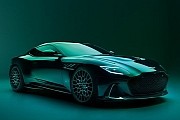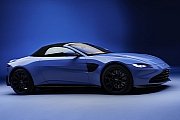history
What do you do when you have fair amounts of car racing talent, ample passion for automobiles and your enthusiasm, if converted into electricity, could power a small town? You start your own car production and sales business, of course. That is exactly how the Aston Martin brand was started, proudly born into a garage, much like grunge music. Lionel Matin and Robert Bamford garnered levels of success similar to Kurt Cobain's Nirvana. However, Martin and Bamford's version of Nirvana was engineered form scrap through a partnership that would ultimately lead to a kick in the luxury auto-market's groin.
Aston Martin was founded in 1913, soon after Martin emerged victorious out of the famed Aston Hill race. The duo produced their first car 2 years later by fitting a four-cylinder Coventry-Simplex engine to a 1908 Isotta-Fraschinni chassis. However, their plans of starting production were abruptly shattered by the First World War outbreak when both of the car-makers joined the army.
Still, Aston Martin would prevail as soon as the War was over, with the company being refunded to resume its activity. However, not much time went by before Bamford left Aston Martin in 1920. Luckily enough, a wealthy investor saw the true potential of the brand and poured heavy funds into its rejuvenation. Count Louis Zborowski investment turned almost overnight into a delicious technological improvement reward topped with racing track winnings whipped cream.
In 1922, Aston Martin produced vehicles to compete in the French Grand Prix. Besides gaining fame by appearing at some of the most popular races of that time, the cars also collected acclaim by setting new speed and endurance records at Brooklands. The three types of chassis that were used at the time became known as the winning trio with chassis number 1915 at the top and supporting numbers 1914 and 1916 at the sides.
However, the tidal wave of fame that has propelled Aston Martin to new heights broke against the solid wall of a 1924 bankruptcy. Still, it survived, having been purchased by Lady Charnwood who gave her son John Benson an important administrative role. It would ultimately prove that her son could not face the challenges of such a position and the company failed again only one year later. By 1926, the doors had slammed shut, with Lionel Martin stepping into the shoes of his former business partner, Robert Bamford.
Soon after Martin's leaving, the company would be revived for a second time by a ring of rich investors including Bill Renwick and Augustus Bertelli who were responsible for the design and performance of some of the models that would later enter production. By 1937, Bertelli had already developed a variety of vehicles, some of the most famous being the 'Le Mans', the Mk II' and the 'Ulster'.
Although Aston Martin was doing well, it was soon afflicted by a third set of financial problems that were deftly fixed by L. Prideaux Brune, who continued to finance the company for a short time. After changing ownership for a fourth time, the luxury car-maker became still, once the Second World War broke out.
in 1947, the lethargy that had snugly wrapped around the company's activity received a coupe de grace from 'charioteer' David Brown, who had also acquired Lagonda the same year. Aston Martin Motors, who had gained the name during its 1926 resurrection, had entered a new stage of production. The first model of the DB series would soon appear, with a successor being announced in 1950, the DB3 seven years later and so on until the early 70's with the DBS V8.
Although Aston Martin enjoyed success and appreciation, it switched to financial-trouble mode once more, changing two ownerships over the next two decades until Ford took over in the early 90's. During this time, Aston had grown in size and notoriety with a much wider palette of offerings ranging from the Volante to the Vantage and the DB7. Although Ford would not slacken the reigns on Aston Martin's leadership, the board committee was forced to take the same decision as Aston's previous owners: sell the company. Last year (2007) Aston Martin entered a new era when it was purchased by a Prodrive chairman David Richards-led consortium for the amount of $848 million. Ever since, Aston has registered an overall sales increase and has expanded by opening more dealers in Europe and even moving to China, a performance that hasn't been achieved in almost a century worth of car-brand history.
expand











































